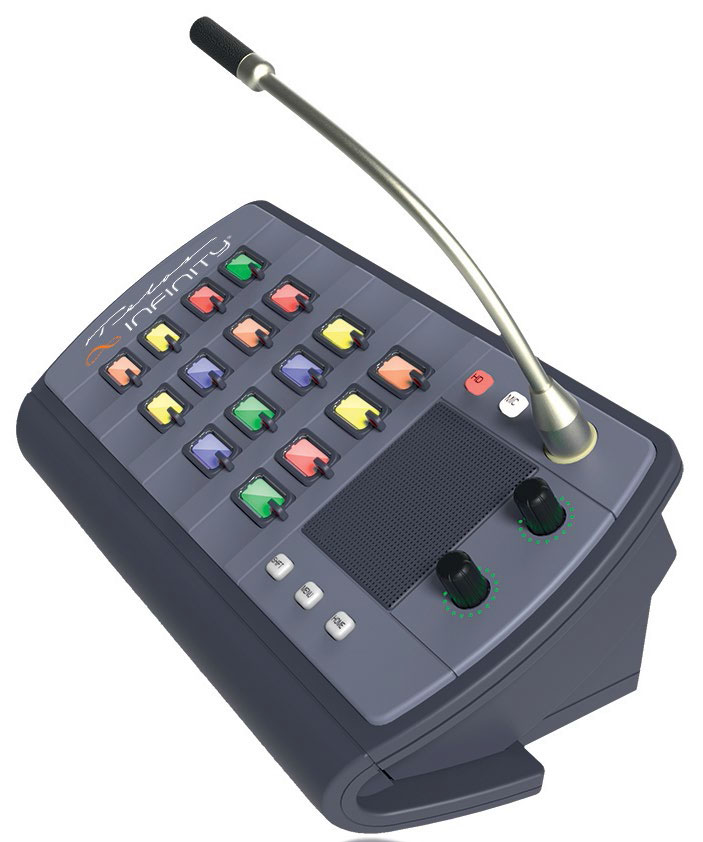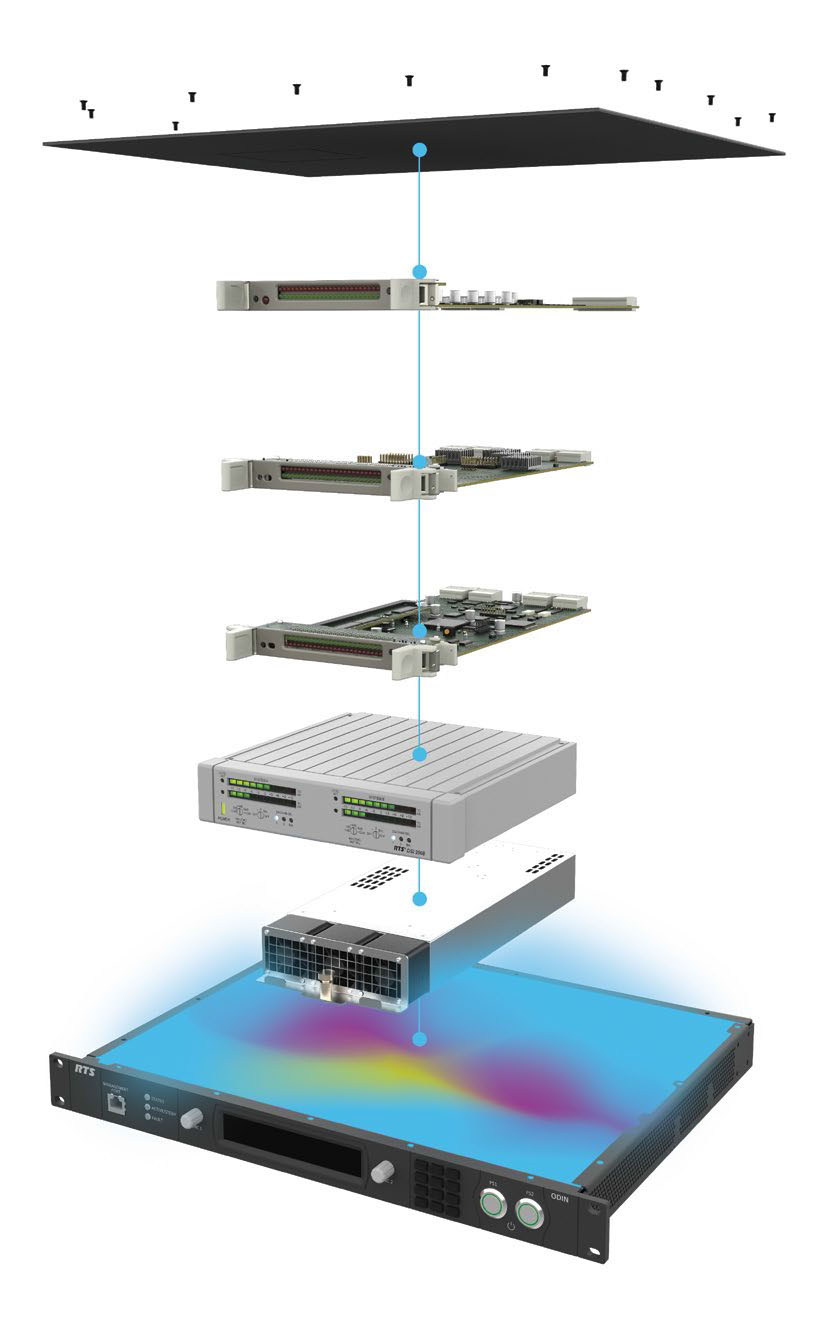Intercoms Link Voice, Data For Worldwide Connectivity
LOS ANGELES—As AoIP transports have coalesced around the AES67 interoperability standard over recent years, IP communications equipment manufacturers have introduced products that extend far beyond simple intercom functionality. No longer confined to restricted geographic areas with limited partyline functionality, the latest generation of IP comms gear has become a gateway to the LAN or even the WAN, offering worldwide connectivity and the ability to transport all kinds of data, not just audio, and certainly not just voice communications.

MATRIX-FREE
Last year, Telos Alliance launched its Infinity IP Intercom system, which converges voice communication and contribution audio on a single IT backbone, employing the latest standards-based VoIP and Livewire+ AES67 AoIP transport. Infinity introduced a matrix-free paradigm to broadcast communications that enables the system to be scaled up without worrying about how many ports are available. Infinity additionally integrates into existing analog, AES, SDI, and MADI systems via an AoIP interface that could include the manufacturer’s xNode baseband-to-IP interface line.
More recently, Telos introduced Infinity Link, an OPUS codec-based software product that converts WAN-side VoIP to LAN-side Livewire+ AES67. The royalty-free OPUS codec offers manually and auto-adjustable bitrates that are optimized for voice communications over the Internet and for storage and streaming applications.
The way that Infinity Link encompasses VoIP as part of the entirely matrix-free AoIP solution is unique, according to Martin Dyster, Telos Infinity project director.

“With a simple license key, each Telos Infinity device, whether a beltpack, master panel, or expansion panel, can host a group of Infinity Link codecs,” Dyster said. “This enables any IP audio path within its own network to connect across WAN to a Link-equipped codec at any remote location, bridging the local system to the outside world via its own embedded processing engine.”
TUNING OUT AMBIENT NOISE
The professional video industry's #1 source for news, trends and product and tech information. Sign up below.
Riedel Communications has introduced a unique wireless comms service aimed specifically at sports officials. Initially developed with German Football League (DFL) to address their requirements but applicable to many sports, Riedel’s Bolero S wireless hardware connects via AES67 to a local Riedel Artist frame, which interfaces with the Riedel’s Remote Operations Center in Wuppertal, Germany.
At the ROC, engineers at Riedel’s newly managed services group monitor audio quality, RF performance, and battery life while also adjusting talk and listen levels on the officials’ voice-activated headsets in real time as ambient noise levels change.
“This was the result of great synergies between Riedel, DFL and the refereeing department of Deutscher Fußball-Bund,” said Riedel’s Corporate Business Development Manager, Jacqueline Voss. “A stadium with 80,000 cheering fans, like Signal Iduna Park in Dortmund, is a very demanding environment for clear communications.”
The company is reportedly now in discussions with several North American leagues about adopting the service.
The Artist-1024 node packs 1024 non-blocking ports into a 2RU box that can be fitted with up to eight additional software-definable Universal Interface Cards (UIC). These new interface card combine networking, mixing, and management, and can be configured to act as an AES67 or MADI subscriber card, or as an Artist fiber/router/processor card through Riedel’s Director configuration software. The integral mixer on each subscriber card can be scaled from 8 to 128 ports per card and can access all 1,024 ports of the Artist backbone.
MAKING THE MATRIX MORE ACCESSIBLE

RTS recently launched its ODIN OMNEO digital intercom matrix, touting the new product as the only multiformat intercom matrix that works with all industry-leading standards, protocols, and connection types, including AES67, AES70, ST 2110, VoIP, G.711, G.729, G.722, Dante, and 4W analog. It also connects directly to partyline systems, the company said.
The feature set and compact form factor of the 1RU device were designed to make a matrix solution more accessible and easier to use than previously, according to the company, widening the potential IP-based communications user base. ODIN also provides a path for system expansion for smaller users who want to upgrade existing RTS systems to the latest technologies, the company states.
ODIN supports RTS IP-based ROAMEO wireless systems and KP-Series keypanels and users can flexibly define ports to use any of the available connector types. Providing a path to scale up the system, a single ODIN can grow from the basic 16 ports to a maximum of 128 ports and as many as eight ODIN units can be connected via an optical Inter-Frame Link to create a single matrix with up to 1024 ports. Up to 16 analog keypanels may be connected.
Joe Watson, staff engineer for ATK Versacom recently used ODIN to provide comms for “American Idol” auditions. “Everything I needed fit in one small 13-space rack—a huge improvement compared to my multiple-rack setups previously,” he said. “This makes ODIN a great fit for flypack operations.”
EXPANDING IP CAPABILITIES
Several years ago, Clear-Com introduced its LQ Series IP interfaces, compact devices that enabled users to extend their intercom footprint by connecting virtually any type and brand of intercom or audio device via AoIP, SIP, GPIO, 2-wire or 4-wire. The interfaces are a cost-effective method for connecting visiting systems or ad hoc users.
Clear-Com’s professional intercom communication portfolio now encompasses a broad range of IP-based products, including matrix, wireless and mobile IP solutions for all kinds of production workflows, including remote production.
“The breadth and depth of our ever-evolving product line proves how far Clear-Com has come with IP, building on our unrivalled expertise and industry experience to create solutions for any application,” said Clear-Com President Bob Boster.
At the NAB Show, the company further expanded its product line with the addition of the new V-Series Iris intercom Panel, which provides Eclipse HX users with a low latency AES67 AoIP connection. The V-Series Iris Panel can monitor and send communications over three concurrent full-duplex uncompressed audio IP streams, enabling systems to deliver high quality, uncompressed AES67 audio from user to user with significantly reduced latency. Users can deploy up to 64 Iris panels for each high-density E-IPA audio-and-intercom-over-IP card fitted. The card is natively AES67 compliant.

Clear-Com’s IP products also include its FreeSpeak II wireless intercom system. The FreeSpeak II IPT Transceiver features AES67 compatibility, low latency signal distribution, high radio performance, and high audio bandwidth, enabling FreeSpeak II wireless beltpacks to be deployed across a user’s LAN. The IP Transceiver connects to an AES67-compatible IP router and to Clear-Com’s Eclipse HX system via the E-IPA card.
Last year, Clear-Com unveiled the latest version of Agent-IC, a mobile app Apple or Android mobile devices that connecting securely to core intercom users across multiple IP networks over 3G, 4G and Wi-Fi, a potential boon to outside broadcasts or productions where crews are spread across large areas.
Steve Harvey began writing for Pro Sound News and Surround Professional in 2000 and is currently senior content producer for Mix and a contributor to TV Tech. He has worked in the pro audio industry—as a touring musician, in live production, installed sound, and equipment sales and marketing—since November 1980.
